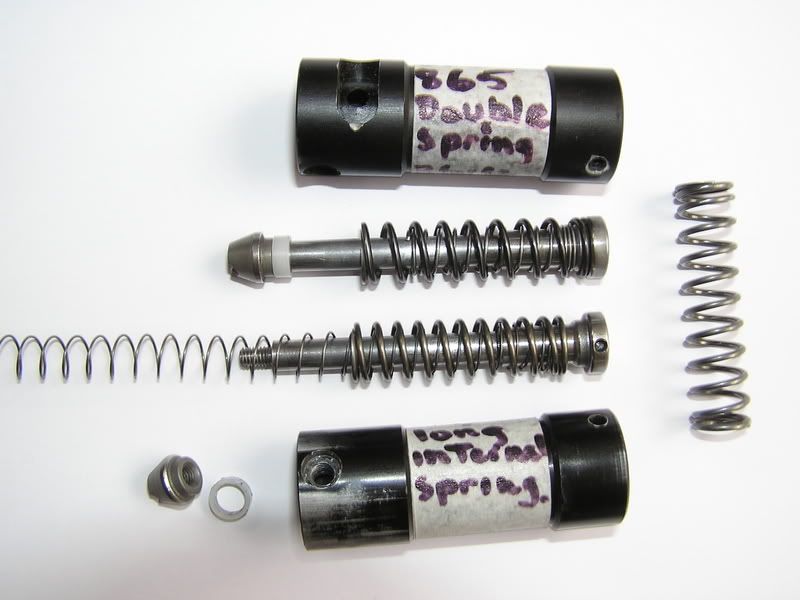Perhaps some of us are of the understanding that without a properly designed hammer-spring-valve unit, air usage becomes inefficient. Personally, I attribute this problem to a hammer spring still having preload against the hammer even when the gun is uncocked. I wish I were able to provide an animated illustration of what I’m trying to explain, but since you’re all very imaginative airgunners, I think this should be sufficient.
Anyway, as some of us have already seen from slow motion videos on Youtube that right after the hammer strikes the valve on a conventional PCP the valve will push it back. And because the spring behind the hammer still has some preload against it, it will cause the hammer to rebound and smack the valve a second (or third, or more) time. This all happens very fast, which the naked eye can’t see. So, I think that if you are able to use a hammer spring with the correct spring tension as the one your current spring utilizes that will also put out the desired velocity but exerts no preload when the gun is uncocked, hammer bounce is impossible, or at the very least, is greatly minimized because there is no preload. Thus, when the hammer hits the valve, it will not rebound because the hammer spring behind it has no energy (preload) to let it rebound.
My Cricket can give me over 430 consistent shots at 8 FPE (powered-down for my backyard shooting sessions). Using the cut, low-powered spring that the gun came with, there seems to be no preload on the hammer at all when it is uncocked. I believe this might be the reason why I am able to get that many shots. To be fair, please note that I also tuned my regulator and valve spring to work harmoniously with the hammer spring tension. But still, I think that the lack of (or a very little amount) of hammer spring preload on my Cricket’s current state of tune contributes significantly to the shot count.
Anyway, what do you all think? Opinions are welcome.
Anyway, as some of us have already seen from slow motion videos on Youtube that right after the hammer strikes the valve on a conventional PCP the valve will push it back. And because the spring behind the hammer still has some preload against it, it will cause the hammer to rebound and smack the valve a second (or third, or more) time. This all happens very fast, which the naked eye can’t see. So, I think that if you are able to use a hammer spring with the correct spring tension as the one your current spring utilizes that will also put out the desired velocity but exerts no preload when the gun is uncocked, hammer bounce is impossible, or at the very least, is greatly minimized because there is no preload. Thus, when the hammer hits the valve, it will not rebound because the hammer spring behind it has no energy (preload) to let it rebound.
My Cricket can give me over 430 consistent shots at 8 FPE (powered-down for my backyard shooting sessions). Using the cut, low-powered spring that the gun came with, there seems to be no preload on the hammer at all when it is uncocked. I believe this might be the reason why I am able to get that many shots. To be fair, please note that I also tuned my regulator and valve spring to work harmoniously with the hammer spring tension. But still, I think that the lack of (or a very little amount) of hammer spring preload on my Cricket’s current state of tune contributes significantly to the shot count.
Anyway, what do you all think? Opinions are welcome.
